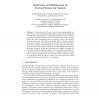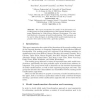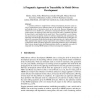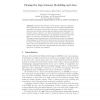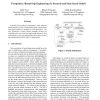0
posts
with
0
views
0
views
ECMDAFA
2009
Springer
14 years 5 months ago
2009
Springer
Textual Syntax (TS) as a form of model representation has made its way to the Model-Driven Software Development community and is considered a viable alternative to graphical repres...
ADAEUROPE
2010
Springer
14 years 5 months ago
2010
Springer
Real-Time (RT) systems exhibit specific characteristics that make them particularly sensitive to architectural decissions. Design patterns help integrating the desired timing behav...
ENTCS
2006
14 years 7 months ago
2006
This report summarises the results of the discussions of a working group on model transformation of the Dagstuhl Seminar on Language Engineering for Model-Driven Software Developme...
MKWI
2008
14 years 8 months ago
2008
: A common problem in model-driven software development processes is the tracing of requirements across different phases of the software development life cycle iple levels of abstr...
HIS
2007
14 years 8 months ago
2007
Genetic programming is known to provide good solutions for many problems like the evolution of network protocols and distributed algorithms. In such cases it is most likely a hard...
SE
2010
14 years 8 months ago
2010
: Numerous design decisions are made in model-driven software development which are mostly implicit and not documented properly. Hence, the design knowledge is usually 'in the...
SLE
2009
Springer
14 years 11 months ago
2009
Springer
Abstract. Model-Driven Software Development is based on standardised models that are refined, transformed and eventually translated into executable code using code generators. How...
ACHI
2008
IEEE
15 years 1 months ago
2008
IEEE
— To meet fast changing demands on modern software architectures the ambition to shorten and improve software development processes has increased. The approach of model-driven so...
ICSE
2009
IEEE-ACM
15 years 1 months ago
2009
IEEE-ACM
In model-driven software development, while scenariobased models are closer to distributed system requirements, state-based models are suitable for code generation. Our tool ‘Fo...


